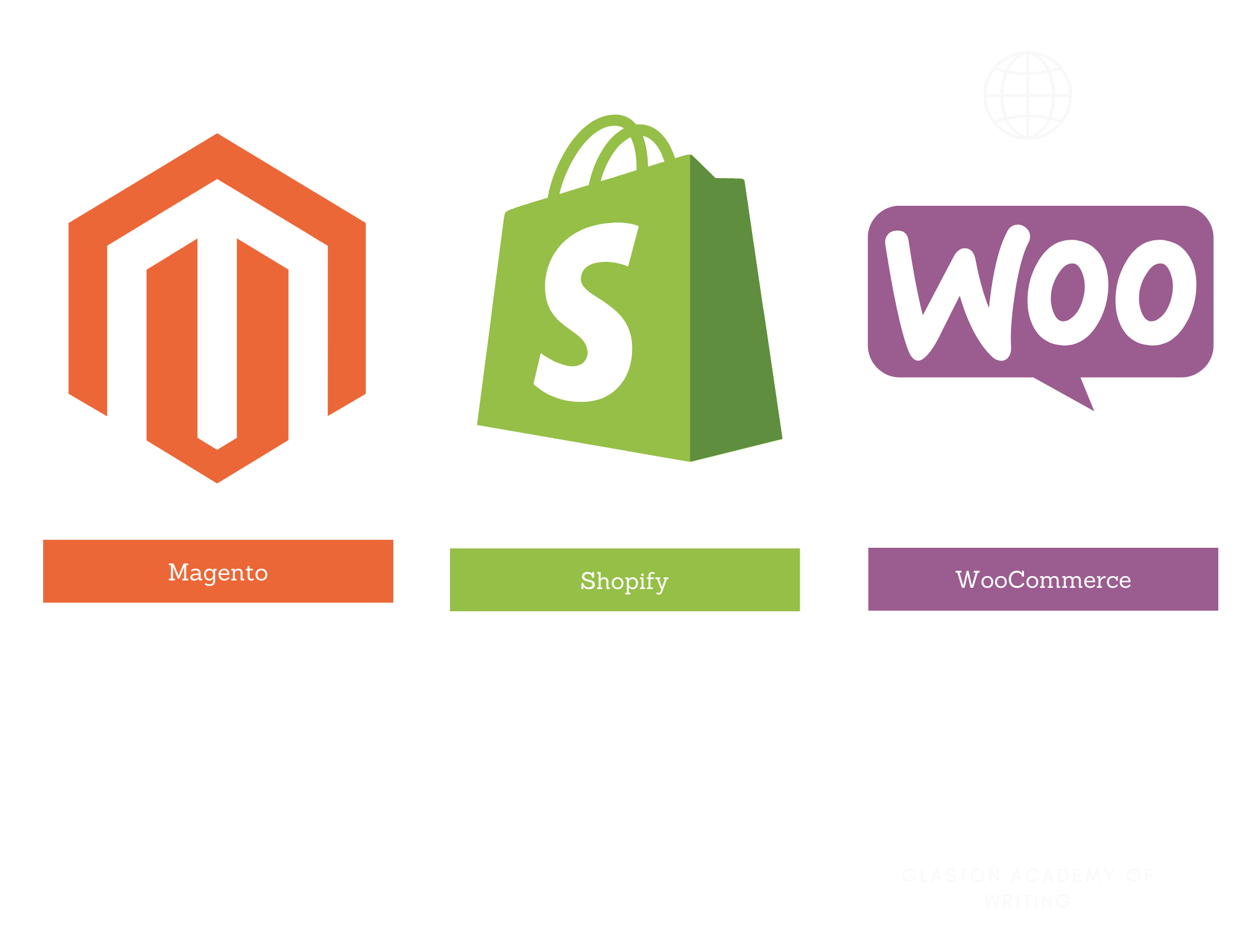







This document is to discuss in more detail how an e-commerce store works. If you’re planning to set up your eCommerce store and wondering how and where to start? You have landed on the right page.
When you go to a webshop to set up your e-commerce store, the first thing they will ask you is, is it a single vendor or multivendor. It is essential to understand who will be adding products to the eCommerce store. So it’s necessary to create the following things either yourself or with the help of a Business Analyst:
– Sitemap
– User journey
– High-end features – example: payment, booking, add to cart, multivendor, etc.
At the end of this phase, the business analyst will be able to tell you which platform will be most suitable for your business.
There are three most popular eCommerce brands:
– Magento
– Shopify
– WooCommerce


Magento is an enterprise-focussed eCommerce platform with incredible functionality. It provides customization capability by adding a lot of flexibility. Leading eCommerce brands with quality project budgets prefer Magento because of the ease of setting up the B2B and IR marketplace.
Magento is the biggest eCommerce platform in terms of features and functionalities offered. For the same reason, setting up an eCommerce shop in Magento requires a bigger budget and web development expertise. You may need a maintenance team for such a complex system which is not ideal for SMBs.
It is the most popular SaaS-based eCommerce platform because of the ease of setting up the business. Shopify is the most preferred eCommerce platform because SMB owners who have little technical exposure can easily manage the online shops. It doesn’t require a domain, SSL certificate, and hosting. Shopify counts everything in the subscription fees from shop owners.
Drawback:
– Shopify takes a 2 percent commission on each transaction made through 3rd party payment gateway that brings down the profit margin.
– Scalability is limited
– Monthly subscription charges – Basic Shopify $29/month, Shopify $79/month, Advanced Shopify $299/month
Unlike the other two platforms mentioned above, WooCommerce is not an eCommerce platform but only an eCommerce plugin for WordPress. It is already the most popular CMS and provides extensive scalability as free and paid plugins for easy site enhancement.
WooCommerce has managed to gain a global market. Also, the features provided by WooCommerce are professional, quality-controlled as well as easy to use. Since WooCommerce is a plugin, there’s an option to customize the functionalities.
There are thousands of predefined themes available in the market for all the three platforms mentioned above on Themeforest. You can choose from the themes, or you can also create your design from scratch.
The themes available are in two formats:
– Image format
– HTML
You will notice that the themes which have the HTML done cost between USD 40-60. Whereas the image format themes cost $15. Understandably, if you buy only an image, you need to hire a front-end developer (HTML) to convert the PSD image to HTML format. Then it will be made dynamic using the chosen platform.
PLEASE NOTE that if you are using a purchased theme, request the developer to remove redundant codes. Usually, there are a lot of features and functionalities in the predefined-theme which you’d never need. It is advisable to remove those unused sections without affecting the code logic.
There will be two advantages in that:
– Optimized site loading time
– Better SEO score
Once the project enters SDLC, it is advisable to research the general roadblocks by studying the themes and the features. Be in constant touch with the developers and request at at-least two meetings in a week. Ask them to give a demo. If they say that the code is not up, ask them to share the screen and show the progress in their local machines.
While you are on this line, you have crossed level 1 of your elementary research on the leading eCommerce platforms. It is time for you to drill deeper, visit the websites of all the 3-service providers and inspect the services and features they are offering. In case you need any consultancy and expert advice, don’t forget to drop us a line.
Website Development | Mobile App Development | Application Development
We will definitely get back in touch with you over mail within 12 Hours.
In-case you have not heard from us within 12 hours, kindly check your spam once.
I'm a software consultant. I've 7+ years of industry experience. I'd love to connect with you and brainstorm your custom software needs. It's my responsibility to find you the best solution.
ANAND GUPTA
Drop your details and we'll get in touch with you within 12 hours.
Reach us for
Talk to us